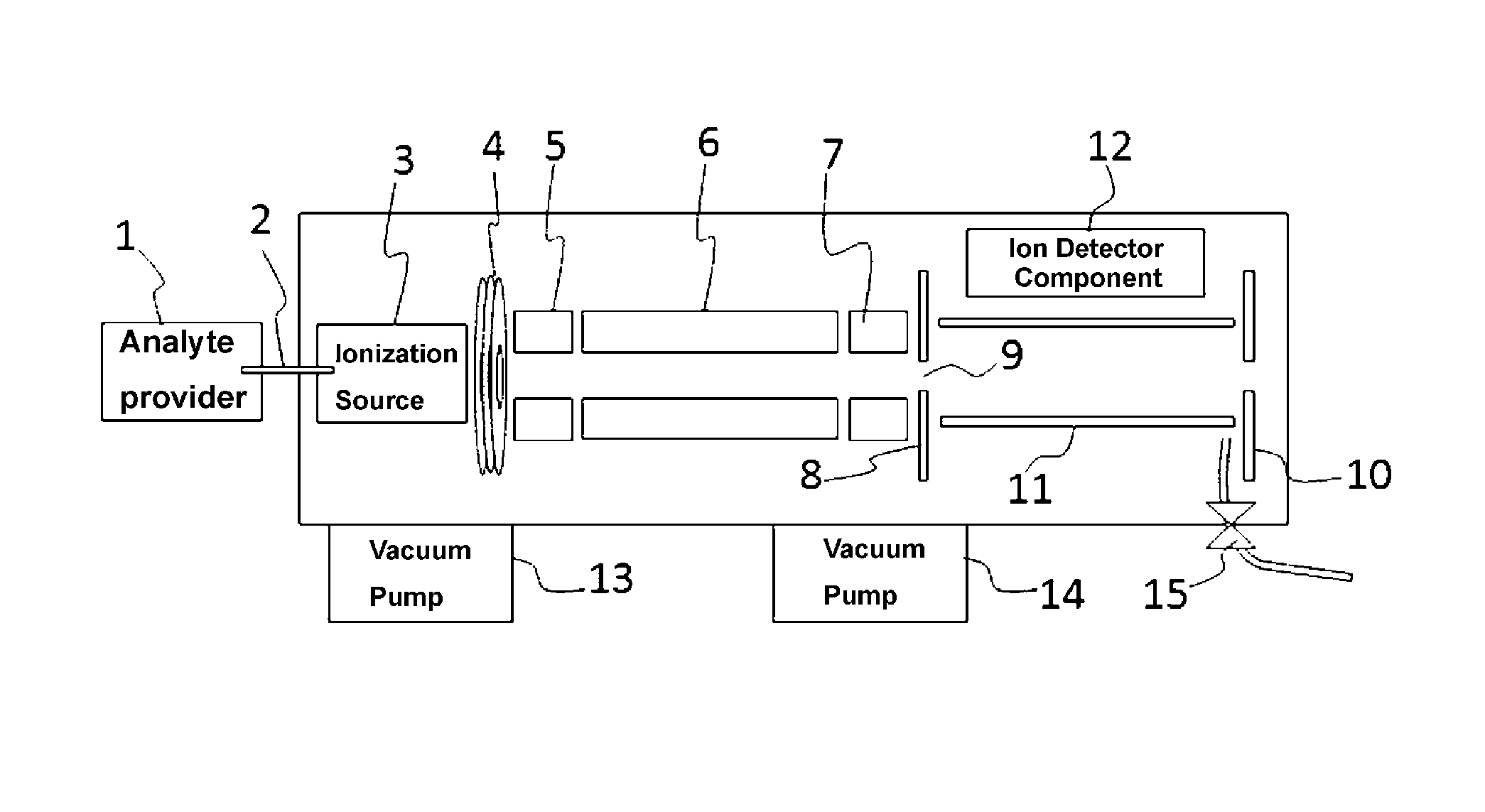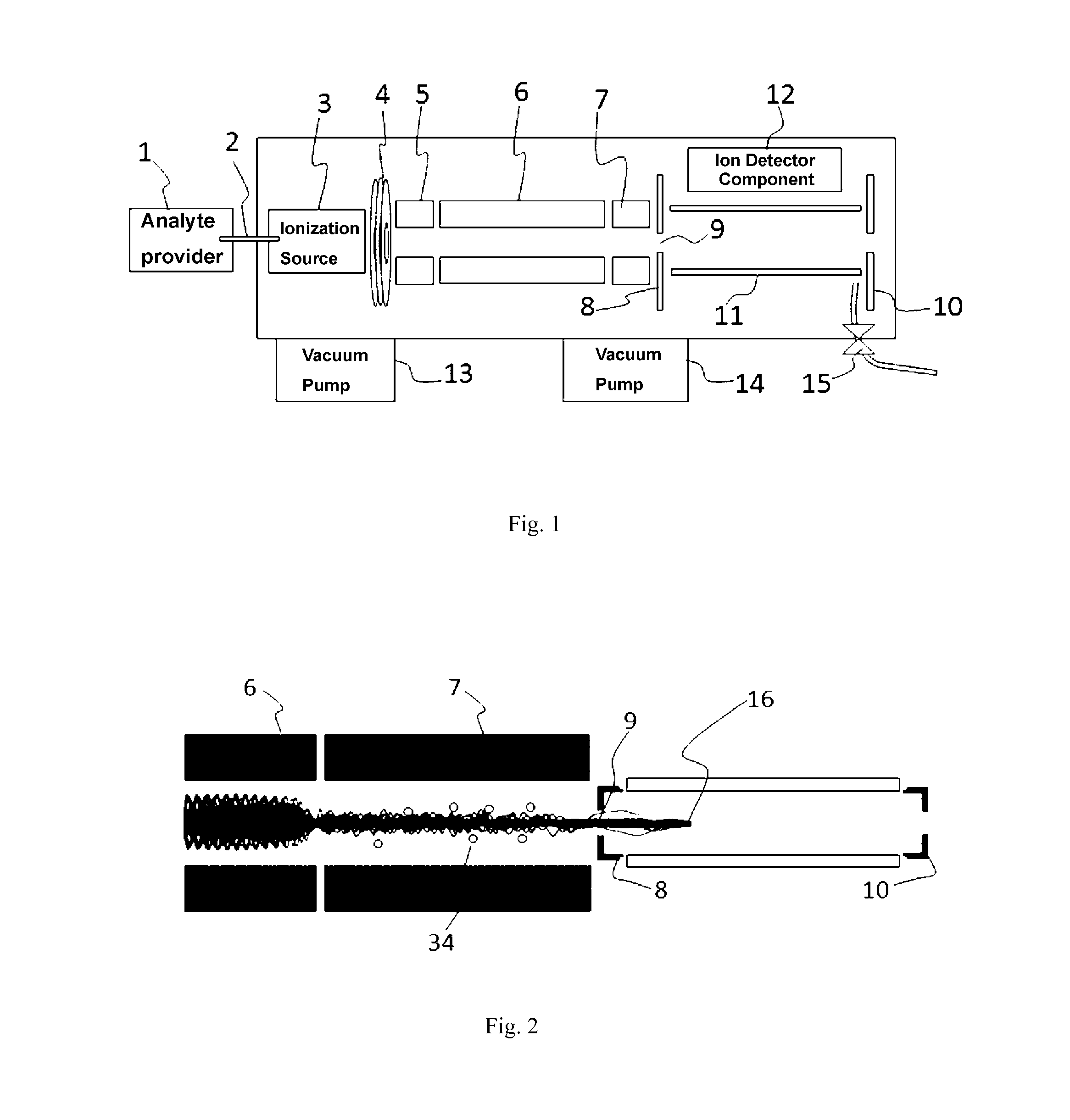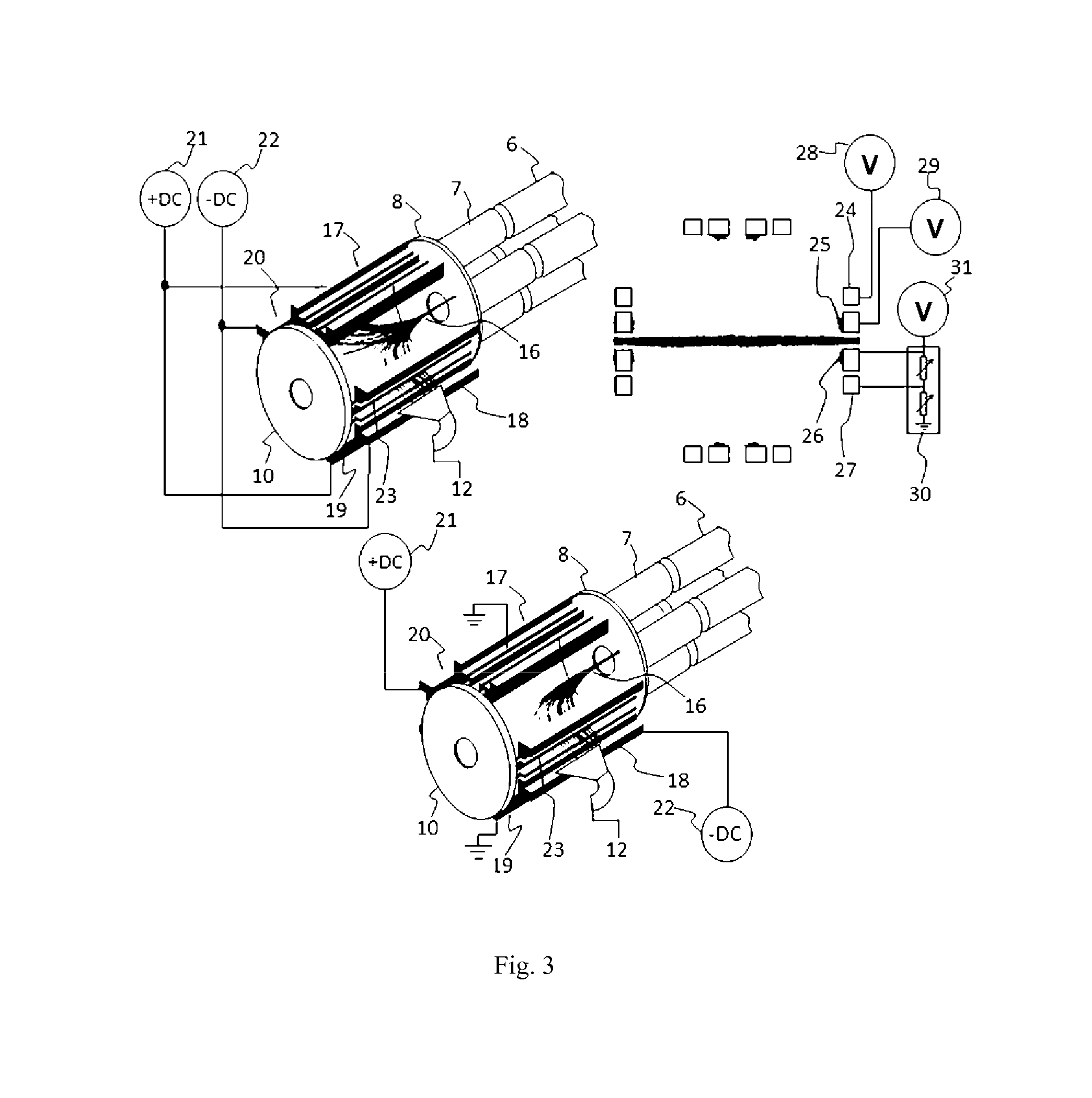Tandem mass spectrum analysis device and mass spectrum analysis method
a mass spectrum analysis and tandem technology, applied in the direction of instruments, particle separator tube details, separation processes, etc., can solve the problems of large difference between fragment abundance relation, poor resolution, and inability to accurately identify the number of compounds according to the standard database, so as to achieve high sensitivity and high product ion output efficiency
- Summary
- Abstract
- Description
- Claims
- Application Information
AI Technical Summary
Benefits of technology
Problems solved by technology
Method used
Image
Examples
Embodiment Construction
[0027]FIG. 1 is a structural diagram of a mass spectrometer according to the present invention. A gas phase material under analysis is sent from a sample source 1 such as gas chromatograph to an ionization source 3, for example, an electron ionization source ionized externally, in a vacuum chamber through an air tight sample pipe interface 2. Ions are generated in the ion source and are educed from the ionization source, are focused through a set of single-hole lenses 4, and then fly into a downstream quadrupole rod system group. The quadrupole rod system group consists of three sections, namely, a pre-rod system 5, a main rod system 6, and a rear rod system 7, and can operate in two modes: ion guide mode and ion select mode. In the ion guide mode, quadrupole rod systems of all the sections are applied with identical pure radio frequency (RF) signals to generate a quadrupole field, and the quadrupole field has a strong radial focusing effect and can make ions in a broad mass-to-char...
PUM
| Property | Measurement | Unit |
|---|---|---|
| diameter | aaaaa | aaaaa |
| diameter | aaaaa | aaaaa |
| length | aaaaa | aaaaa |
Abstract
Description
Claims
Application Information
 Login to View More
Login to View More - R&D
- Intellectual Property
- Life Sciences
- Materials
- Tech Scout
- Unparalleled Data Quality
- Higher Quality Content
- 60% Fewer Hallucinations
Browse by: Latest US Patents, China's latest patents, Technical Efficacy Thesaurus, Application Domain, Technology Topic, Popular Technical Reports.
© 2025 PatSnap. All rights reserved.Legal|Privacy policy|Modern Slavery Act Transparency Statement|Sitemap|About US| Contact US: help@patsnap.com



